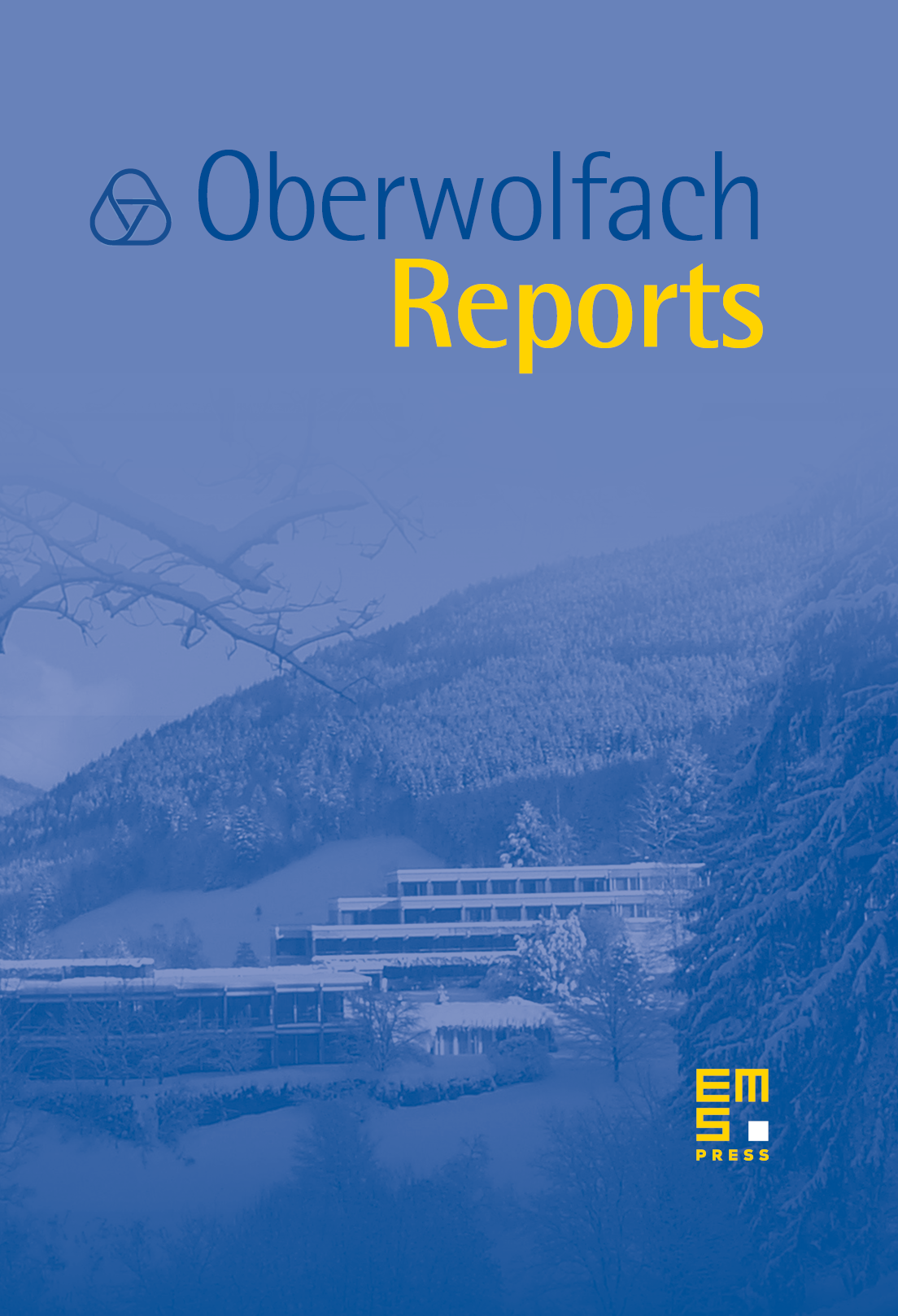Mathematical Theory and Modelling in Atmosphere-Ocean Science
Oliver Bühler
New York University, United StatesAndrew J. Majda
New York University, United StatesRupert Klein
Freie Universität Berlin, Germany

Abstract
This workshop was the second meeting at Oberwolfach of this kind, following after a highly successful previous meeting in 2002. Again, the meeting was very well attended with over 38 participants from Germany, Europe, and the U.S.A. Most attendees were senior researchers but there was also a handful of post-docs and graduate students. The organizers feel that this mix greatly enhanced the educational outreach and impact of the meeting, which is a significant target in its own right.
The wide range of talks reported here reflected the interdisciplinary breadth of the workshop, with research topics ranging from the physical and mathematical intricacies of tropical convection on the one hand to the abstract geometric interpretations of the governing PDEs of atmosphere–ocean fluid dynamics on the other. This ambitious breadth of research lies at the heart of this interdisciplinary workshop and it provided a very stimulating environment for lively talks and discussions at Oberwolfach.
The common thread running through the mathematical challenge of atmosphere and ocean dynamics is the inherent multiscale nature of these vast dynamical systems, in which spatial scales interact nonlinearly across scales from millimetre-size rain drops to planetary large-scale waves spanning the globe. Concomitant with the vast range of spatial scale is a range of temporal scales from a few seconds for sound waves to many years for oceanic vortices. A persistent theme of the workshop was how to tackle these multiscale problems theoretically and numerically. Progress was reported on the difficult problem of tropical convection, which features very intricate micro-physics and is unresolvable in its details on present-day supercomputers. Work describing the space-time organization of convection over a broad range of scales is currently underway by a number of researchers and the workshop gave an up-to-date snapshot of a number of models and approaches. Similar approaches in boundary layer modelling were reported on as well.
Viewed over long time scales the faster processes in the atmosphere and oceans begin to resemble stochastic noise and a number of theoretical talks aimed to model the low-frequency variability of the global system based on simplified stochastic representations for the fast processes. This links naturally to the problem of integrating stiff PDEs due to widely different temporal and spatial scales, and a number of talks presented progress in the numerical analysis of schemes that can tackle these stiff systems.
From a physical point of view the distinction between fast and slow processes often overlaps with the distinction between wavelike and vortical motions and a number of talks addressed averaging methods and the nonlinear interactions between fast waves and slow vortices. This overlapped with some theoretical developments in the area of constrained PDEs, in which fast waves are filtered ab initio in some manner. The resulting constrained PDE system has a smaller phase space and typically can be viewed as a suitable projection of the original PDE system on a slow manifold. This raises theoretical and numerical issues of long-term accuracy and stability and several such aspects were discussed in the workshop.
Cite this article
Oliver Bühler, Andrew J. Majda, Rupert Klein, Mathematical Theory and Modelling in Atmosphere-Ocean Science. Oberwolfach Rep. 3 (2006), no. 3, pp. 2307–2398
DOI 10.4171/OWR/2006/39